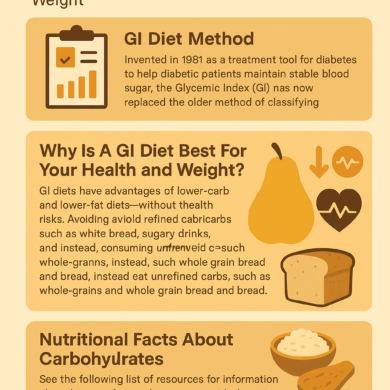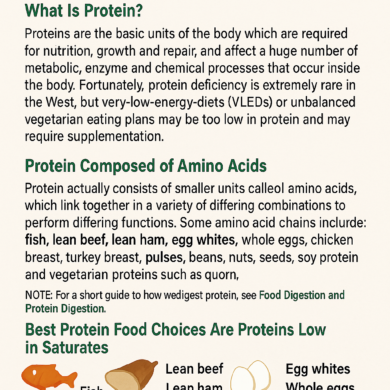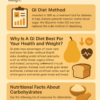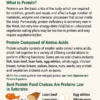Diet For Celiac Disease
Diet For Gluten Intolerance and Celiacs
eliac Disease – Gluten Intolerance
Causes
Patients with celiac disease are unable to tolerate the protein gluten, found in wheat, rye, barley and oats. Actually, gluten is a mixture of dozens of different proteins, which fall into two typres: glutenins and gliadins. bloating, mouth ulcers and sore tongue, painful joints, and depression.
Treatment is a Gluten-Free Diet
At present, the only treatment for celiac disease is to follow a gluten-free diet, and eliminate all foods that contain wheat, rye, barley and oats. Most celiac patients have to avoid all traces of gluten, while some celiacs can get away with eating a small amount occasionally. Also, some patients do not have to eliminate oats from their diet. On the other hand, some celiac sufferers have an acute reaction (known as celiac shock) to even the smallest amount of gluten.
Effect of Gluten-Free Diet on Symptoms of Celiac Disease
For most people, a gluten-free diet reduces symptoms and heals existing intestinal damage. Improvements may be experienced within days of starting the diet, and the small intestine is usually completely healed within 3-6 months. However, results are conditional upon the history and severity of symptoms. Thus it may take up to 2 years for older celiacs to recover fully and some problems, such as delayed growth and tooth discoloration, may never improve. Finally, a small percentage of patients do not improve. These sufferers typically have severely damaged intestines that are unresponsive even after they eliminate gluten from their diets. In such cases, drug treatment may be indicated.
Diet For Celiac Disease
Diet For Gluten Intolerance and Celiacs
Celiac Disease – Gluten Intolerance
Causes
Patients with celiac disease are unable to tolerate the protein gluten, found in wheat, rye, barley and oats. Actually, gluten is a mixture of dozens of different proteins, which fall into two typres: glutenins and gliadins. bloating, mouth ulcers and sore tongue, painful joints, and depression.
Treatment is a Gluten-Free Diet
At present, the only treatment for celiac disease is to follow a gluten-free diet, and eliminate all foods that contain wheat, rye, barley and oats. Most celiac patients have to avoid all traces of gluten, while some celiacs can get away with eating a small amount occasionally. Also, some patients do not have to eliminate oats from their diet. On the other hand, some celiac sufferers have an acute reaction (known as celiac shock) to even the smallest amount of gluten.
Effect of Gluten-Free Diet on Symptoms of Celiac Disease
For most people, a gluten-free diet reduces symptoms and heals existing intestinal damage. Improvements may be experienced within days of starting the diet, and the small intestine is usually completely healed within 3-6 months. However, results are conditional upon the history and severity of symptoms. Thus it may take up to 2 years for older celiacs to recover fully and some problems, such as delayed growth and tooth discoloration, may never improve. Finally, a small percentage of patients do not improve. These sufferers typically have severely damaged intestines that are unresponsive even after they eliminate gluten from their diets. In such cases, drug treatment may be indicated.
Gluten-Free Diet Advice
General Food & Eating Advice For Celiacs
Diet Advice For Celiacs
What is a Gluten Free Diet
A gluten-free eating plan involves the elimination of all foods that contain wheat (including spelt, triticale, and kamut), rye, barley, and possibly oats – in other words, most grain, pasta, cereal, and many processed foods.
Even so, celiacs can eat a well-balanced diet with a variety of foods, including bread and pasta. For example, instead of wheat flour, celiac patients can use potato, rice, soy, or bean flour, and they can buy a wide range of non-gluten bread, pasta, and other products from specialist food companies.
Check Food Labels For Hidden Gluten
It is important for all celiac patients to read food labels and food ingredient lists, to make sure that the food does not contain hidden gluten. Also, note that hidden sources of gluten include additives, preservatives, and stabilizers found in processed food, medicines, and mouthwash. If ingredients are not listed on the product-label, check with the manufacturer.
Support For Celiacs
A dietitian, a health care professional who specializes in food and nutrition, can help people learn about their new diet. For example, it’s worth asking your dietitian whether oats are safe to include in your food-plan. Also, celiac support groups are particularly helpful for newly diagnosed patients and their families as they learn to adjust to a new gluten-free way of life.
Gluten Free Diet For Life
For celiac patients, eating a gluten-free diet is mandatory for life. Eating any gluten, no matter how small the amount, can damage the intestine and trigger symptoms. This is true for anyone with the disease, including people who experience only mild side-effects.
Details of Gluten-Free Diet
Celiac Diet: Foods to Eat, Foods to Avoid
luten-Free Diet
Below is a list of foods that are allowed on your gluten-free eating plan, as well as those that should be omitted. It is not a complete list. Please discuss your individual needs with your doctor and/or dietitian.
Guide to Breads and Grains For Celiacs
Eat about 6+ servings each day
Foods To Eat
Breads or bread products made from corn, rice, soy, arrowroot corn or potato starch, pea, potato or whole-bean flour, tapioca, sago, rice bran, cornmeal, buckwheat, millet, flax, teff, sorghum, amaranth, and quinoa.
Hot cereals made from soy, hominy, hominy grits, brown and white rice, buckwheat groats, millet, cornmeal, and quinoa flakes.
Pure corn tortillas, cornmeal, hominy, grits, popcorn; potatoes, potato chips.
Rice, rice noodles, and pastas made from allowed ingredients. Some rice crackers and cakes, popped corn cakes made from allowed ingredients.
Foods To Avoid
Breads and baked products containing wheat, rye, triticale, barley, wheat germ or bran, graham, gluten or durum flour, wheat starch, oat bran, bulgur, farina, wheat-based semolina, spelt, kamuto. Cereals made from wheat, rye, triticale, barley, and oats; cereals with added malt extract and malt flavorings. Pastas made from ingredients above. Most crackers.
Gluten-Free Food Tips
Use corn, rice, soy, arrowroot, tapioca, and potato flours or a mixture instead of wheat flours in recipes. Experiment with gluten-free products. Some may be purchased from your supermarket, health food store, or direct from the manufacturer.
Serving Sizes
1 slice bread
1 cup ready-to-eat cereal
1/2 cup cooked cereal, rice, or pasta
1/2 bun, bagel, or English muffin
Guide to Vegetables & Fruits For Celiacs
Best Fruit and Veggies For Gluten-Free Diet
Foods For Celiacs
Guide to Vegetables
Eat about 3-5 servings each day
Veggies to Eat
All plain, fresh, frozen vegetables. All vegetable juices or canned vegetables made with permitted ingredients.
Veggies To Avoid
Any creamed or breaded vegetables (unless permitted ingredients are used), canned baked beans, some french fries.
Serving Sizes
– 1 cup raw leafy
– 1/2 cup cooked or chopped
– 3/4 cup juice
Guide to Fruits
Eat about 2-4 servings each day
Fruits to Eat
All fruits and fruit juices.
Fruit Products To Avoid
Some commercial fruit pie fillings and dried fruit.
Serving Sizes
– 1 medium size fruit
– 1/2 cup canned fruit
– 3/4 cup fruit juice
– 1/4 cup dried fruit
Gluten-Free Diet: Dairy Foods, Meats and Protein
Best Dairy Products, Meat, Protein for Celiacs
Foods For Celiacs
Guide to Dairy Foods
Eat about 2-3 servings each day
Foods to Eat
All milk and milk products except those made with gluten additives. Aged cheese.
Foods To Avoid
Malted milk Some milk drinks, flavored or frozen yogurt.
Serving Sizes
– 1 cup milk or yogurt
– 1.5 oz natural cheese
– 2 oz processed cheese
Meats, Poultry, Fish, Dry Beans and Peas, Eggs, and Nuts For Celiacs
Eat about 2-3 servings or total of 6 oz daily
Foods to Eat
All meat, poultry, fish, and shellfish; eggs. Dry peas and beans, nuts, peanut butter, soybean. Cold cuts, frankfurters, or sausage without fillers.
Foods To Avoid
Any prepared with wheat, rye, oats, barley, gluten stabilizers, or fillers including some frankfurters, cold cuts, sandwich spreads, sausages, and canned meats. Self-basting turkey. Some egg substitutes.
Gluten-Free Food Suggestions
When eating out, choose meat, poultry, or fish made without breading, gravies, or sauces.
Serving Sizes
– 2-3 oz cooked
– 1 egg ( = 1oz meat)
– 1/2 cup cooked beans ( = 1oz meat)
– 2 tbsp peanut butter ( = 1oz meat)
– 1/3 cup nuts ( = 1oz meat)
Gluten-Free Food Suggestions For Celiacs
Celiac Diet Advice About Foods to Eat and Foods to Avoid
luten Free Eating
Fats, Sweets, Condiments to Eat
Butter, margarine, salad dressings, sauces, soups, and desserts made with allowed ingredients. Sugar, honey, jelly, jam, hard candy, plain chocolate, coconut, molasses, marshmallows, meringues. Most seasonings and flavorings
Fats, Sweets, Condiments To Eliminate
Commercial salad dressings, prepared soups, condiments, sauces and seasonings prepared with ingredients listed above. Hot cocoa mixes, nondairy cream substitutes, flavored instant coffee, herbal tea, alcohol distilled from cereals such as gin, vodka, whiskey, and beer; ale, cereal, and malted beverages, licorice.
Beverages to Drink
Fruit juice, vegetable juice, pure, instant or ground coffee, tea, carbonated drinks (except root beer), wine, rum, vermouth, cognac.
Drink Enough Fluid
Constipation is a common problem among celiac patients. To reduce symptoms, make sure you take in enough fluid. Aim for at least 4 pints a day, from fluids or food sources.
Gluten-Free Food Suggestions
Store all gluten-free products in your refrigerator or freezer because they do not contain preservatives. Remember to avoid sauces, gravies, canned fish and other products with HVP/HPP made from wheat protein.
Gluten in Processed Foodse
Hidden Gluten in Processed Food
Hidden Gluten Used in Processed Foods
Gluten-containing grains are often used in the manufacture or processing of foods. Therefore, if you suffer from celiac disease, it’s very important to check food labels carefully, and choose foods with permitted ingredients. Here is a very short list of some popular ingredients, with advice on which types you may eat if you are following a gluten-free diet and wish to avoid “hidden gluten.”
“Flour or Cereal products”
Eat Only: Those made from rice, corn potato or soy
“Hydrolyzed Vegetable Protein (HVP) or Texturized Vegetable Protein”
Eat Only: Those foods made from soy or corn
“Starch”
Eat Only: Cornstarch
“Modified Starch or Modified Food Starch”
Eat Only: Those modified starches made from arrowroot, corn, potato, tapioca, maize
“Malt or Malt flavorings”
Eat Only: Those products made from corn
“Soy Sauce”
Eat Only: Soy sauces made without wheat
“Vegetable Gum”
Eat Only: Those gums made from carob or locust bean; cellulose or sugar gum; gum acacia, arabic tragacanth or xanthan
“Vegetable Protein”
Eat Only: Protein made from soy or corn
Gluten-Free Diet Menu
Gluten-Free Eating Plan For Celiac Patients
Gluten-Free Eating Plan
This is a sample of a day’s eating on a gluten-free diet, shown for illustrative purposes only. Remember to maintain your daily fiber intake (about 25–30g per day). Women and children should include 2-3 calcium rich foods every day.
Breakfast
– 6oz apple juice
– Gluten-free muesli with fresh or canned fruit and milk/ OR,
– Buckwheat porridge with dried fruit and 1% milk
– Gluten-free bread with margarine and jelly, honey or peanut butter.
– Tea or coffee
Lunch
– 2 oz roasted chicken breast/any lean meat
– 2 slices gluten free bread
– 1 cup mixed salad
– 1/2 cup carrot sticks
– 1/2 cup bell pepper slices
– 1 medium apple, or 1/2 cup yogurt (check ingredients)
– Water, fruit juice, 1% milk, iced-tea or coffee
Dinner
– 3 oz broiled pork chop
– 1 cup basmatic rice/rice noodles
– 1/2 cup green beans/stir-fry vegetable mix
– Frozen fruit with gluten-free custard or ice cream
– Glass of wine, fruit juice, or water
Snack Suggestions
– Dried fruit and nuts
– Gluten-free rice crackers with cheese and tomato
– Gluten-free biscuits
– Low-fat microwave popcorn
– Fresh or frozen fruit
– Yogurt (check ingredients)




